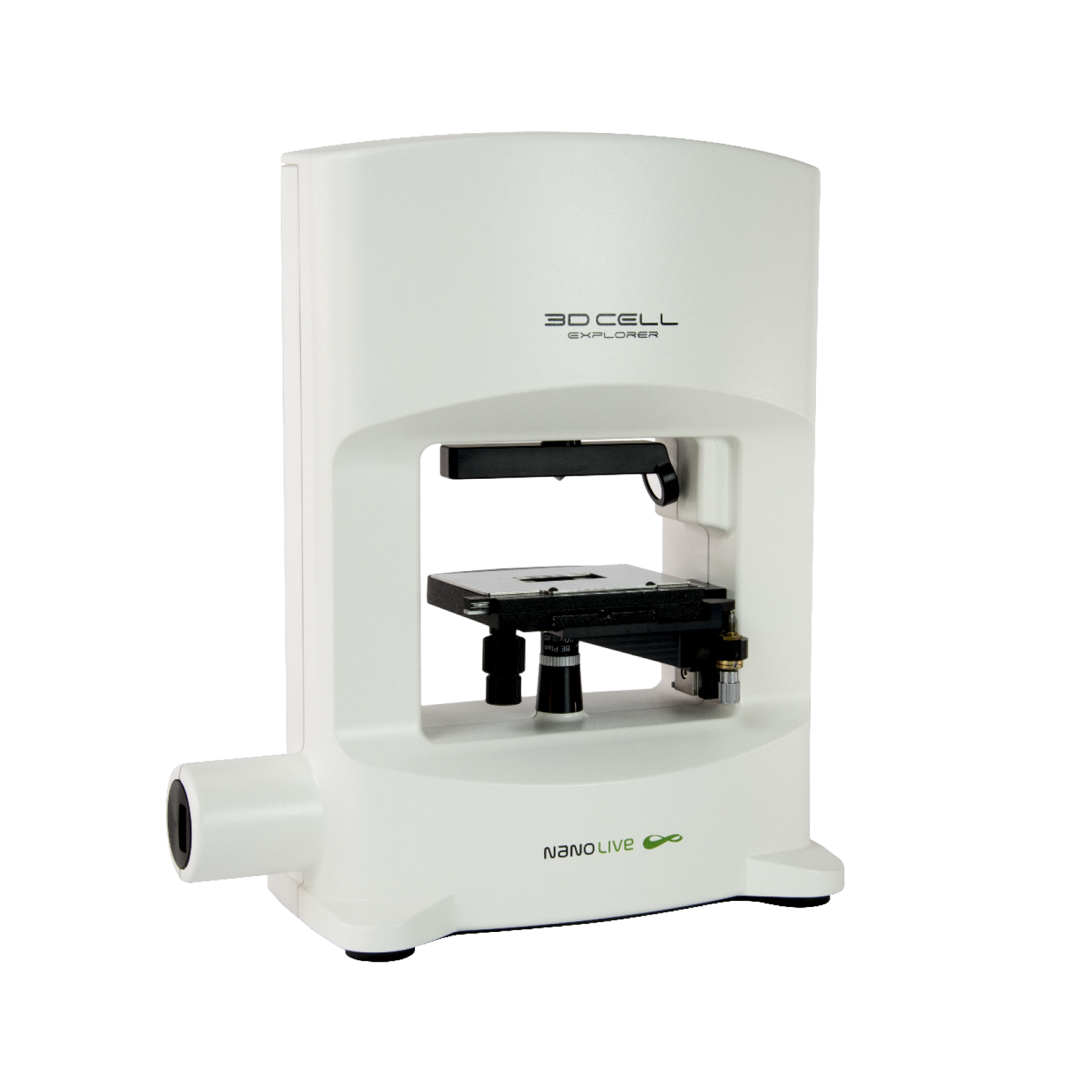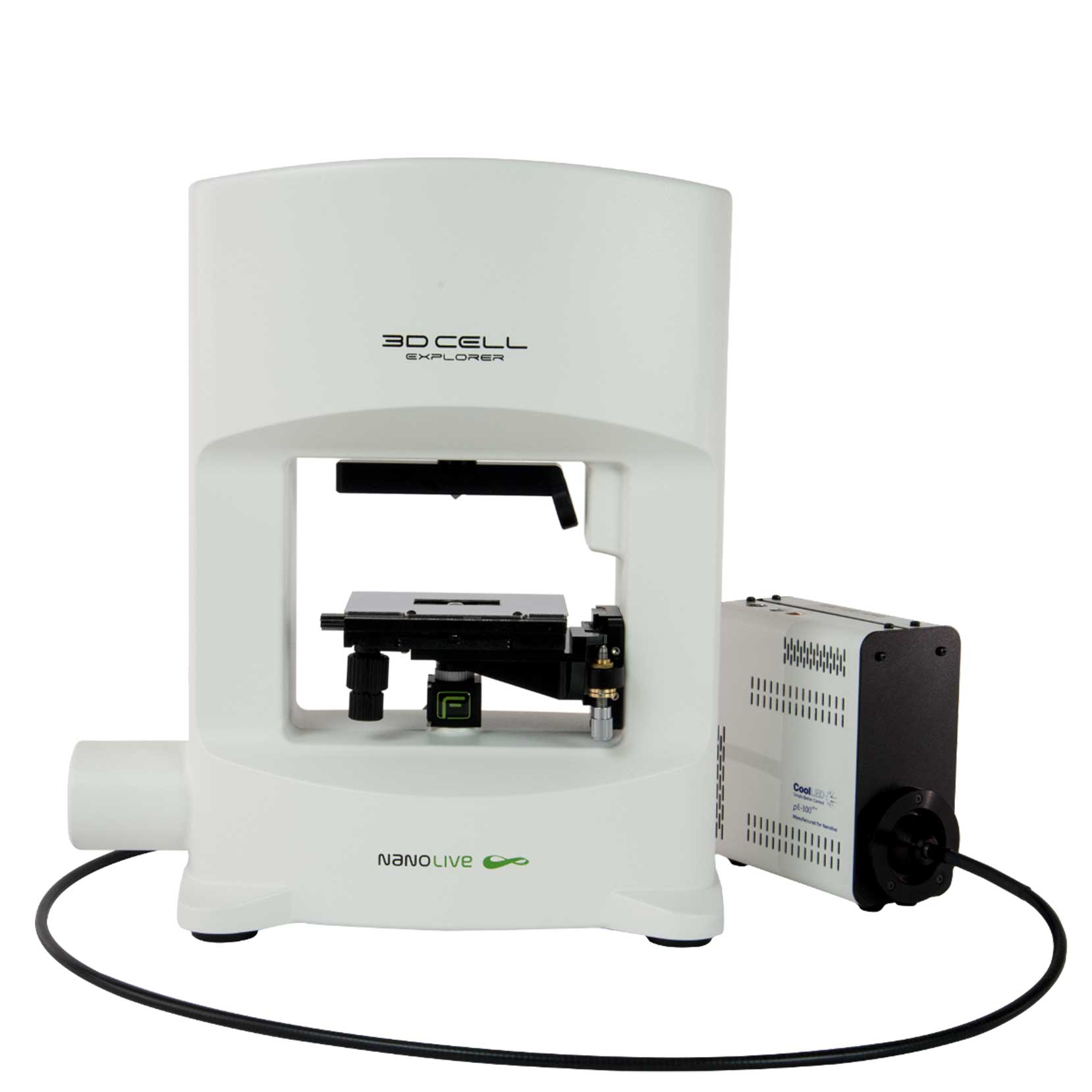Human Umbilical Vein Endothelial Cells (HUVECs) were first cultured in 1973[1]. Since then, their isolation protocols have improved and they have become a model system for the study of a variety of vascular pathologies, such as inflammatory disease, atherosclerosis and cancer.
Endothelial cells are found in the inner layer of both blood and lymphatic vessels and they play a role in substance transport and in a variety of other physiological processes[2].
Two samples of cryopreserved HUVEC culture from a single donor, and kindly provided by Promocell GmbH[3] were observed under Nanolive’s 3D Cell Explorer.
Mitosis
One of the samples led to the observation of a mitotic process (left on the footage). As described in our previous post featuring Mesenchymal Stem Cells, cell division is a strongly regulated process that ensures growth, wound healing and replacement of damaged cells in eukaryotic cells.
During the live cell imaging of the sample we could observe chromatin condensation, chromosome alineation in the metaphase plate, chromatids migration and the formation of the contractile ring and further separation in two fully functional daughter cells.
Mitosis Abortion
Mitotic exit is controlled by proteolysis[4], [5] and the activity of cyclin dependent kinases (CDKs) that play a key role in anaphase spindle formation and the onset of cytokinesis[4]–[7].
This mitosis regulation machinery can sometimes detect errors that may influence mitosis progression and exit, forcing a revert into interphase[4].
On the right side of the footage, the observed cell seems to enter mitosis, but the chromatids do not complete segregation and the cell goes back to interphase without dividing.
[1] E. A. Jaffe, R. L. Nachman, C. G. Becker, and C. R. Minick, “Culture of Human Endothelial Cells Derived from Umbilical Veins. IDENTIFICATION BY MORPHOLOGIC AND IMMUNOLOGIC CRITERIA,” J. Clin. Invest., vol. 52, no. 11, pp. 2745–2756, Nov. 1973.
[2] C. Michiels, “Endothelial cell functions,” J. Cell. Physiol., vol. 196, no. 3, pp. 430–443, Sep. 2003.
[3] “HUVEC: Human Umbilical Vein Endothelial Cells | PromoCell.” [Online]. Available: https://www.promocell.com/product/human-umbilical-vein-endothelial-cells-huvec/. [Accessed: 09-Aug-2019].
[4] F. Wolf, R. Sigl, and S. Geley, “‘… The end of the beginning’: cdk1 thresholds and exit from mitosis.,” Cell Cycle, vol. 6, no. 12, pp. 1408–11, Jun. 2007.
[5] T. A. Potapova et al., “The reversibility of mitotic exit in vertebrate cells,” Nature, vol. 440, no. 7086, pp. 954–958, Apr. 2006.
[6] L. Trinkle-Mulcahy and A. I. Lamond, “Mitotic phosphatases: no longer silent partners,” Curr. Opin. Cell Biol., vol. 18, no. 6, pp. 623–631, Dec. 2006.
[7] D. H. Parry, G. R. X. Hickson, and P. H. O’Farrell, “Cyclin B destruction triggers changes in kinetochore behavior essential for successful anaphase.,” Curr. Biol., vol. 13, no. 8, pp. 647–53, Apr. 2003.
Read our latest news
Cytotoxic Drug Development Application Note
Discover how Nanolive’s LIVE Cytotoxicity Assay transforms cytotoxic drug development through high-resolution, label-free quantification of cell health and death. Our application note explores how this advanced technology enables real-time monitoring of cell death...
Investigative Toxicology Application Note
Our groundbreaking approach offers a label-free, high-content imaging solution that transforms the way cellular health, death, and phenotypic responses are monitored and quantified. Unlike traditional cytotoxicity assays, Nanolive’s technology bypasses the limitations...
Phenotypic Cell Health and Stress Application Note
Discover the advanced capabilities of Nanolive’s LIVE Cytotoxicity Assay in an application note. This document presents a detailed exploration of how our innovative, label-free technology enables researchers to monitor phenotypic changes and detect cell stress...
Nanolive microscopes

3D CELL EXPLORER
Budget-friendly, easy-to-use, compact solution for high quality non-invasive 4D live cell imaging

3D CELL EXPLORER-fluo
Multimodal Complete Solution: combine high quality non-invasive 4D live cell imaging with fluorescence

CX-A
Automated live cell imaging: a unique walk-away solution for long-term live cell imaging of single cells and cell populations



